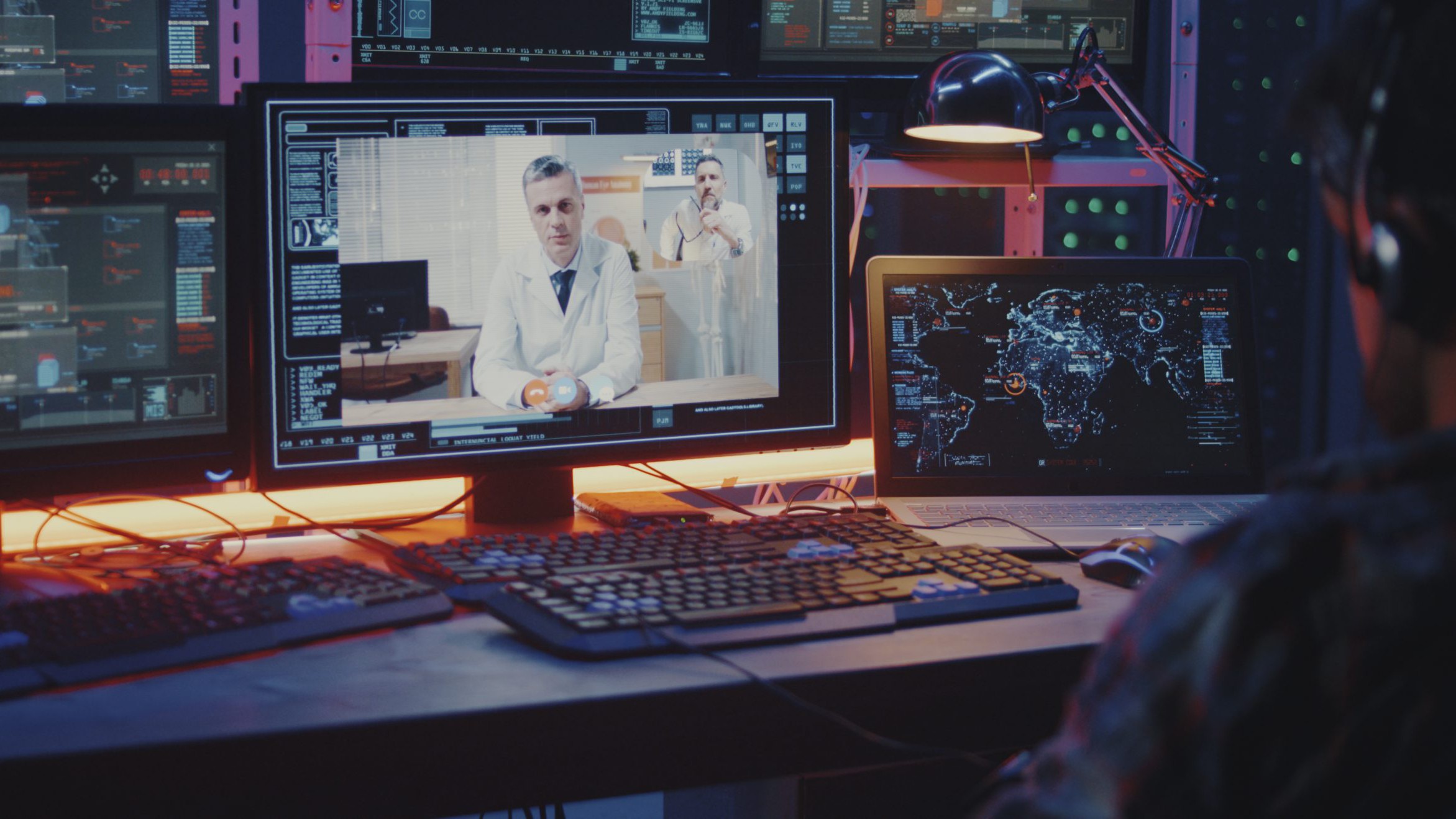Today’s medical professionals juggle multiple applications, each requiring a unique login and password. Single Sign-On (SSO) technology aims to solve this ever-growing problem, which affects everything from workflow efficiencies to cybersecurity. Today’s article covers SSO: how it works, its benefits, and why medical computers with integrated SSO are best for any healthcare group looking to achieve efficient clinical workflow.
Understanding SSO in Healthcare
Article Guide
Single Sign-on, or SSO, allows users to access multiple applications with just one login. These range from clinical applications like electronic medical records (EMR) to accessing a secure patient ward.
The traditional login mechanism requires users to create a unique login and password for every application. Users must enter the information each time they want access.
SSO simplifies this tedious process. Instead, users create a login profile managed by an identity management database or service. When the user logs into an application for the first time, its connected SSO solution contacts the database to see if the user has the necessary permissions. Once the user is confirmed, the SSO creates a temporary identifier called an authentication token to validate them. The token is sent to the application, granting access per the user’s profile.
From then on, the token grants access to applications connected to the SSO. As long as the token is active, users never have to reenter their login information on any approved application.
SSO provides the following key solutions in the healthcare industry:
- Centralized Authentication: Medical personnel only need to remember one login to access the many applications required in their day-to-day operations. Healthcare IT (HIT) also doesn’t have to deal with multiple user profiles and numerous new application password requests. All teams save time that can be focused on other tasks such as patient care or device maintenance.
- Seamless Experience: Providers can swiftly and effortlessly access applications like EMR from any connected medical computer, whether in the ER or remotely on a medical tablet. Also, when new applications go online, users can access them immediately since there is no need to create a new login or update their profile.
- Token-Based Access: The tokens used in SSO can be hardware-based, like smart cards and key fobs, or software, which is downloaded onto the user’s smartphone. Both grant quick access by showing them to the application’s RFID and smart card readers or similar recognition technologies.
- Integration with Identity Providers: SSO can be linked to multiple identity management databases or services. Healthcare staff can save time and energy creating new profiles, logins, and permissions for new medical personnel.
The Need for SSO in Healthcare
The digital transformation of healthcare plays a significant role in the sector’s need for Identity and Access Management (IAM) systems like SSO. HIT, which manages various technologies from networks to medical devices, often faces the following challenges.
Multiple software applications: Today’s medical staff deal with many applications daily. During a typical shift, a provider can be expected to:
- Log into their computer for administrative work.
- Review and update patient electronic medical records (EMR).
- Connect with patients via telemedicine.
- Record and edit notes on dictation software.
- Review and submit prescription requests.
Providers may also need access to the nurses’ station, pharmacy department, and even a separate EMR system used by a different department. Under traditional login mechanisms, all these applications will need their own unique login and password.
Password fatigue and security risks: Password fatigue occurs when users become stressed about tracking all their passwords. This results from tedious and inefficient processes like trying different password combinations or getting password resets by HIT. Some users try to get around password fatigue by applying only one login for all applications. Unfortunately, this strategy could open the medical group to cyber breaches if the login is stolen.
Regulatory compliance: The Health Insurance Portability and Accountability Act (HIPAA) requires covered entities like healthcare groups to keep patients’ electronic health information (PHI) private and secure. Healthcare cybersecurity breaches caused by traditional login mechanisms may open a hospital network to cyberattacks and violate HIPAA and similar regulations, resulting in hefty penalties or even jail time.
SSO addresses these challenges as it provides an easy-to-use way to access multiple applications securely.
Benefits of Implementing SSO in Healthcare Systems
SSO is a separate application login system that addresses the many pitfalls of traditional login mechanisms.
Enhanced productivity and efficiency: Providers and other medical staff make life-and-death decisions based on information. They don’t have time to waste logging into an EMR to get critical test results or drug information. SSO gets them into the necessary applications right away with a simple swipe of their token.
Better user experience and satisfaction: SSO allows medical personnel to remember only one login and password. They don’t suffer password fatigue and can concentrate on patient care. HIT also doesn’t waste time resetting passwords and related activities, allowing the department to focus on important tasks like setting up new medical devices and networks.
Improved security and compliance: SSO’s use of logins and tokens makes it difficult for bad actors to breach healthcare networks, as they need both items to do so. In turn, healthcare organizations find it easier to maintain the data security of PHI and comply with HIPAA regulations.
Implementing SSO in Healthcare
SSO’s numerous benefits—and the consequences of traditional login mechanisms—make it the right choice for managing access to the multiple applications used throughout the modern healthcare industry.
Cybernet’s medical computers are a natural fit for any HIT department looking to roll out SSO throughout its healthcare organization. The computers already have an integrated SSO (Imprivata) with built-in RFID readers and similar technologies to read the tokens. Cybernet’s All-In-One PCs and tablets are also primed to work in hospitals and medical offices thanks to features like:
- Certified medical-grade allows them to work safely near patients and medical devices.
- IP65-rated sealed front bezel to protect the PC’s interior from liquids like harsh hospital cleaners and IV solutions.
- Fanless design also protects the interior from liquids and dust.
Medical computers with integrated SSO also address:
- Integration Issues: Many outdated, non-supported medical devices like older anesthesia machines are still used in healthcare. The same is true for software like earlier versions of Windows OS. These “legacy” devices and software were not designed to support SSO and modern cybersecurity protections. Cybernet’s medical computers come with legacy ports for support and protection.
- Scalability: SSOs are the interface between a user’s login, profile, and approved applications. They’ve been built from the ground up to handle new users and applications as they’re added to a healthcare organization’s networks. Purchasing your medical computers from Cybernet makes scaling easier since we can ensure all their software is based on your specific drive image, even on future PCs.
- Security Best Practices: SSOs can be configured to work with additional advanced security systems like multifactor authentication (MFA), which sends users an email or text message to prove their identity further. Finally, regular security assessments are more straightforward as SSO’s centralized authentication keeps all identification activity manageable to a few select systems.
Safe, Secure Logins Through SSO Leader Imprivata and Cybernet
Today’s medical personnel have to deal with multiple applications, from accessing EMR to opening the drug cabinet. The traditional mechanism of assigning each user a unique login and password leads to many issues. Single Sign-On systems resolve these issues by providing access to multiple applications via a single login per user.
Is your medical group tired of all the issues caused by multiple logins and passwords? Contact an expert here at Cybernet to learn how our computers are the solution. We’ll be happy to explain how our SSO partner, Imprivata, provides safe and secure login access to our medical-grade computers.
Join the conversation and connect with us on this and other relevant topics. Follow us on Facebook, Twitter, and Linkedin.
4 Increasingly Impressive Healthcare Automation Solutions
October 29, 2020
When the time comes for a business or industry to change, the process can often seem simple – Adopt the newest tech, optimize using that tech, and bring your customers better service and value. Oftentimes, this is the…
0 Comments11 Minutes
Top 10 Worst Healthcare Data Breaches of 2023 and How to Strengthen Cybersecurity
August 15, 2023
Healthcare can’t seem to get a break. It’s barely passed the halfway mark for 2023, and it’s been slammed in newsfeeds. Breaches in healthcare cybersecurity are estimated to affect more than 40 million Americans,…
0 Comments10 Minutes
You Can't
Learn from a Pop-up
But we can deliver knowledge to your inbox!
We dive deep in the industry looking for new trends, technology, news, and updates. We're happy to share them with you.
Knowledge, News, and Industry Updates Right in Your Inbox




